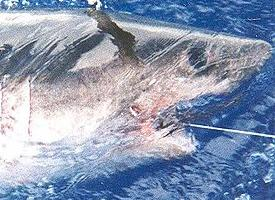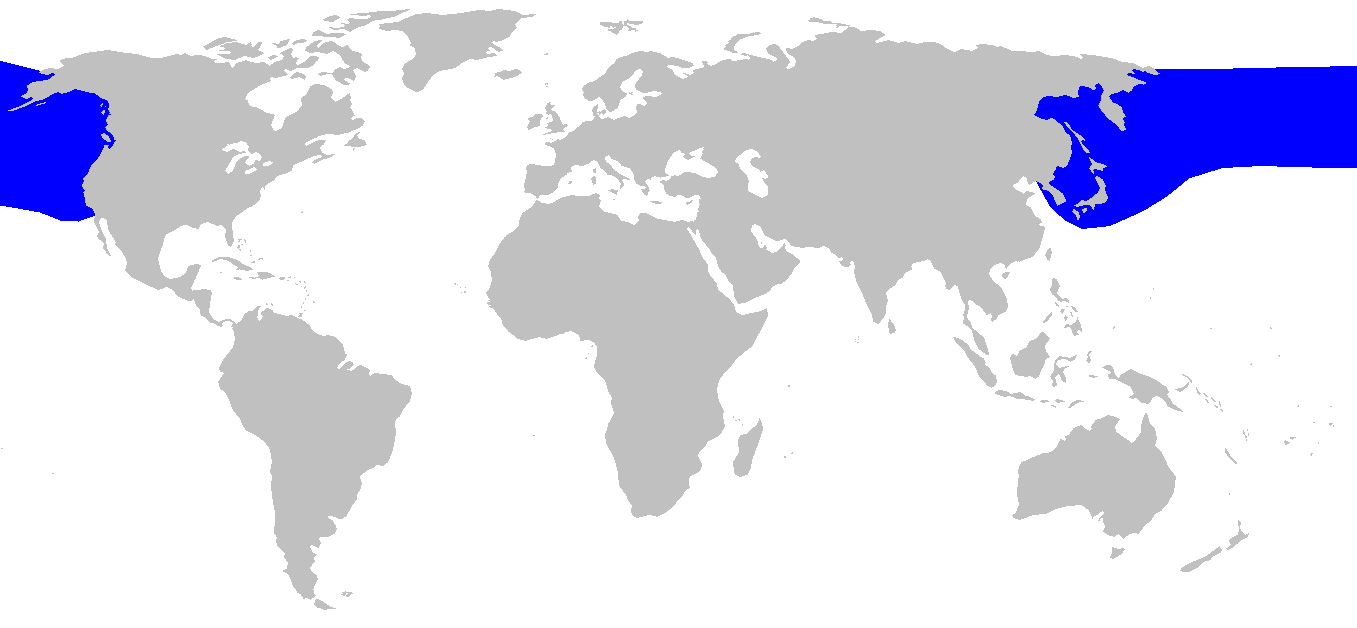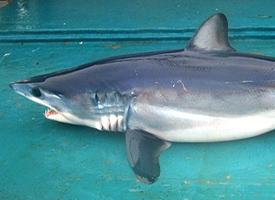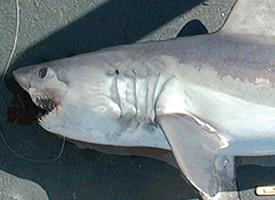
Popis zvířete
The Salmon Shark (Lamna ditropis) is a fascinating and formidable predator that inhabits the cold waters of the North Pacific Ocean. This species is a member of the family Lamnidae, which also includes the more widely known great white and mako sharks. Despite its fearsome appearance and capabilities, the salmon shark plays a critical role in the marine ecosystem, maintaining the balance of marine life through its predatory behaviors.Physically, the salmon shark is a marvel of evolutionary adaptation. It can grow up to 10 feet in length and weigh as much as 660 pounds, although females are generally larger than males. The body of the salmon shark is robust and streamlined, designed for speed and agility in the water. Its skin is a dark blue to gray on the back, transitioning to a white underbelly, a coloration that provides camouflage in the ocean depths. The salmon shark's snout is pointed, and its mouth is equipped with sharp, triangular teeth arranged in rows which are replaced throughout its life, ensuring that it always has the tools necessary for its carnivorous diet.
One of the most remarkable features of the salmon shark is its ability to regulate its body temperature. Unlike most fish, salmon sharks are endothermic, meaning they can generate and retain body heat. This adaptation allows them to maintain a body temperature that is significantly warmer than the surrounding water, enabling them to thrive in the frigid waters of the North Pacific. This thermal regulation is crucial for their high level of activity and metabolic rate, allowing them to pursue prey with remarkable speed and endurance.
The diet of the salmon shark is primarily composed of fish, with a particular preference for Pacific salmon, hence its name. However, it also feeds on squid, sablefish, and herring. Its role as a top predator helps to keep the populations of these species in check, preventing overpopulation and ensuring a healthy, balanced marine ecosystem.
Salmon sharks are migratory creatures, traveling great distances in search of food and suitable breeding grounds. They are known to migrate between coastal and open ocean habitats, following schools of salmon or moving to warmer waters to give birth. Reproduction in salmon sharks is ovoviviparous, meaning the eggs develop and hatch inside the female's body, and the young are born live. This reproductive strategy ensures that the offspring have a higher chance of survival in the harsh marine environment.
Despite their prowess as predators, salmon sharks face threats from human activities. They are often caught as bycatch in commercial fishing operations and are targeted in sport fishing due to their size and the challenge they present to anglers. Additionally, the misunderstanding and fear surrounding sharks have led to negative perceptions of salmon sharks, further endangering their populations.
In conclusion, the salmon shark is a remarkable creature, perfectly adapted to its environment. Its physical characteristics, dietary habits, and role in the marine ecosystem highlight the complexity and interconnectedness of oceanic life. As with many marine species, understanding and protecting the salmon shark is crucial for maintaining the health and diversity of our oceans.
Mapa výskytu

Podobná zvířata
Nové fotografie zvířat
Top 10 zvířat
- Chinese water dragon (Physignathus cocincinus)
- Galápagos tortoise (Geochelone nigra complex)
- Dolphin gull (Leucophaeus scoresbii)
- Japanese macaque (Macaca fuscata)
- Colombian red howler (Alouatta seniculus)
- Sea urchins (Echinoidea)
- Moustached guenon (Cercopithecus cephus)
- Diana monkey (Cercopithecus diana)
- Common reed warbler (Acrocephalus scirpaceus)
- Common house mosquito (Culex pipiens)


